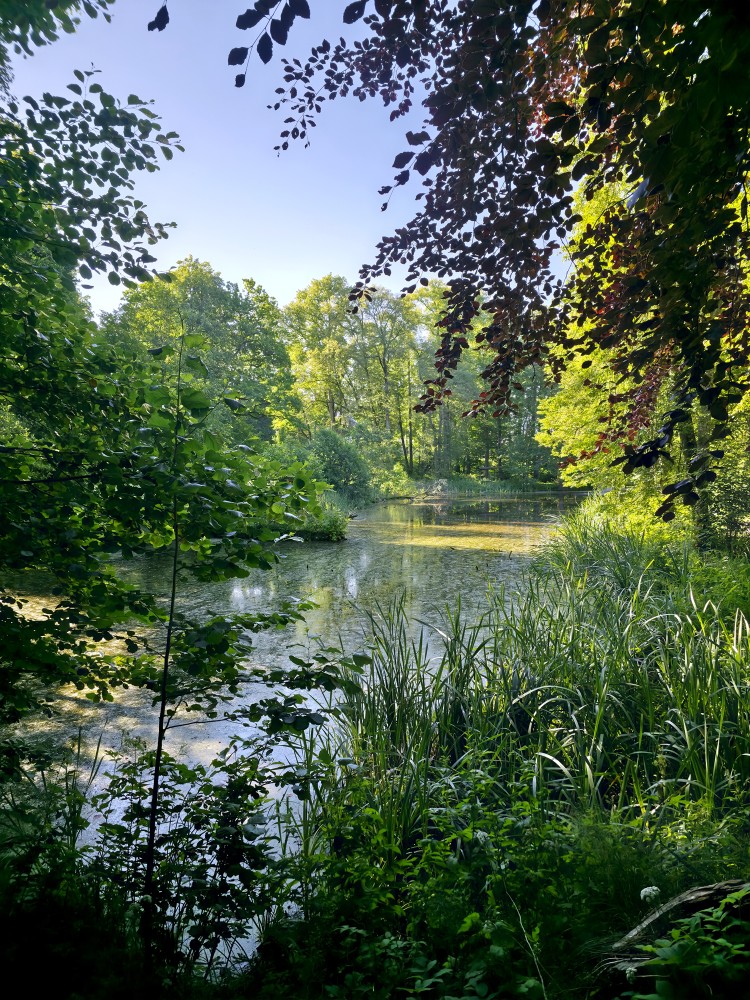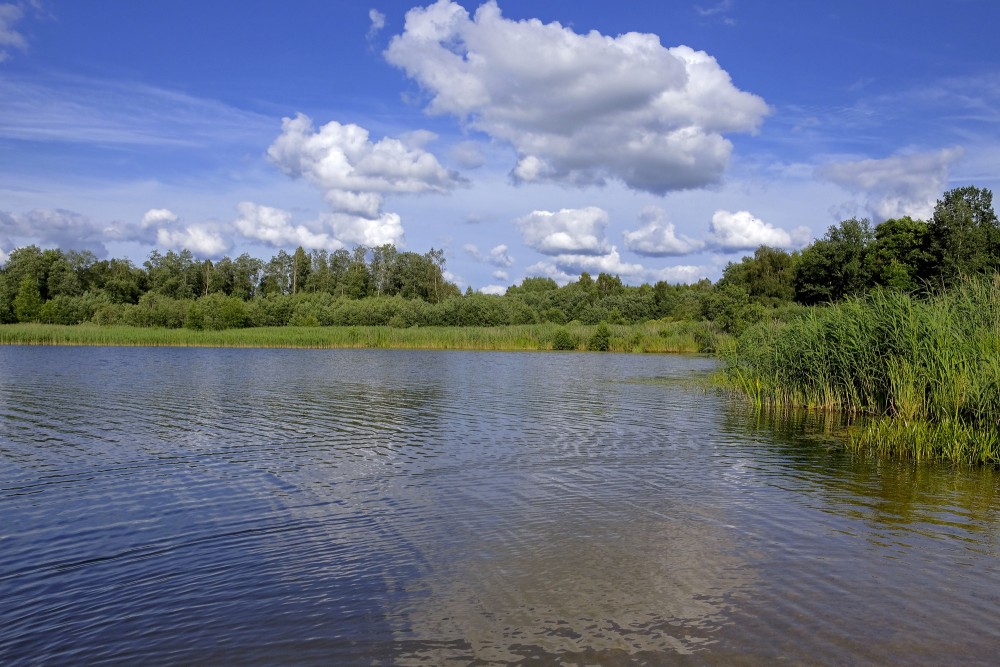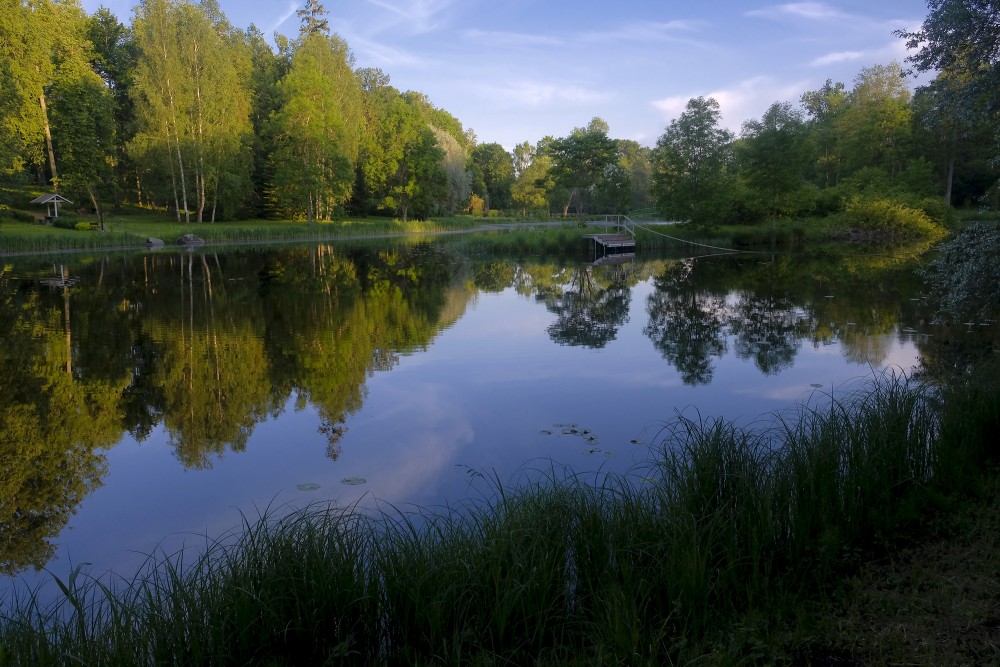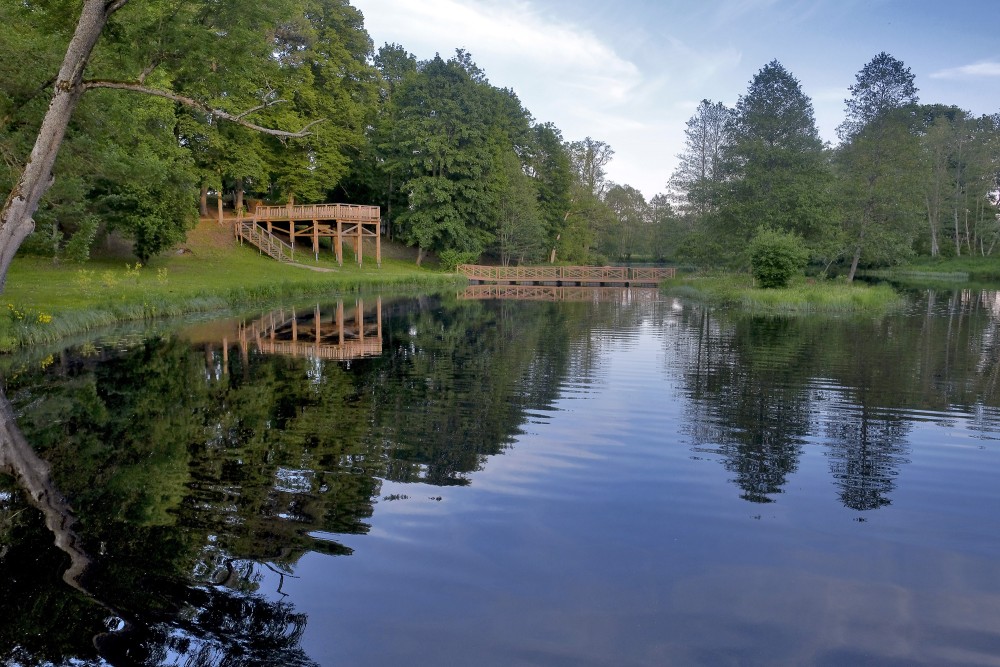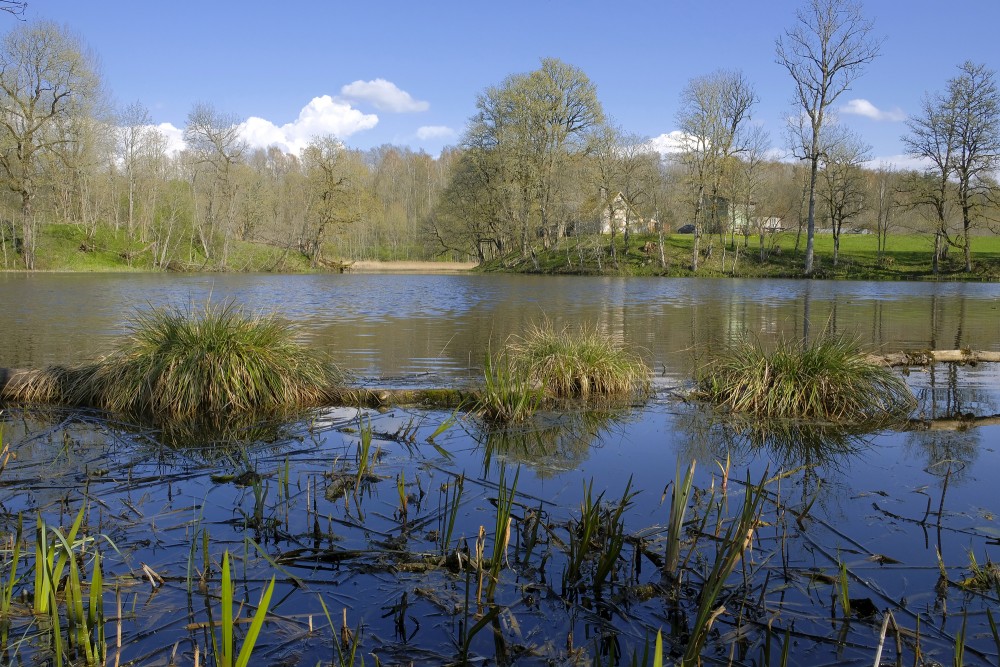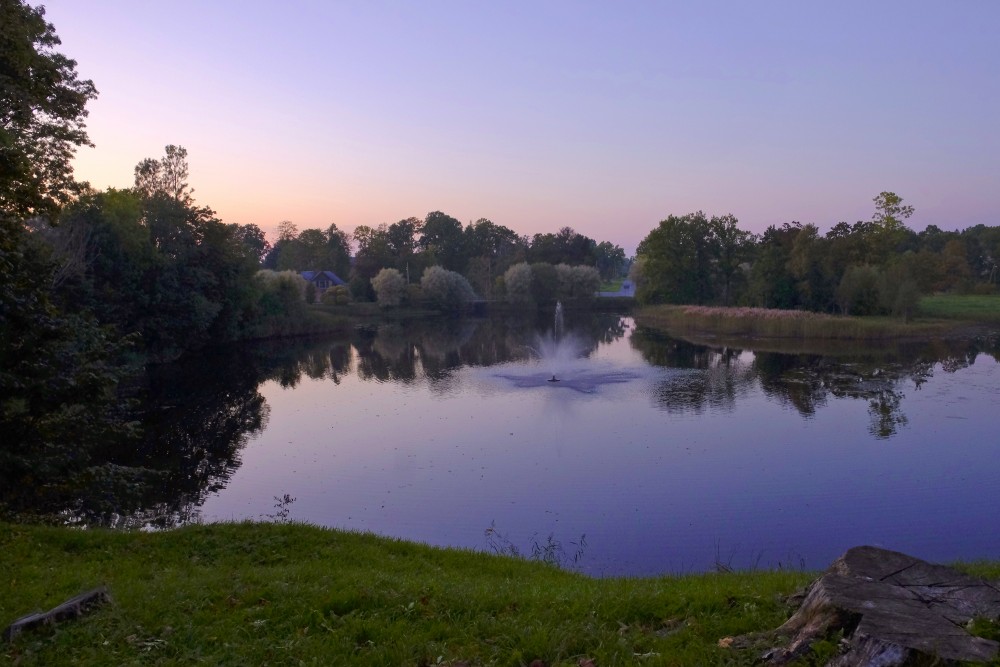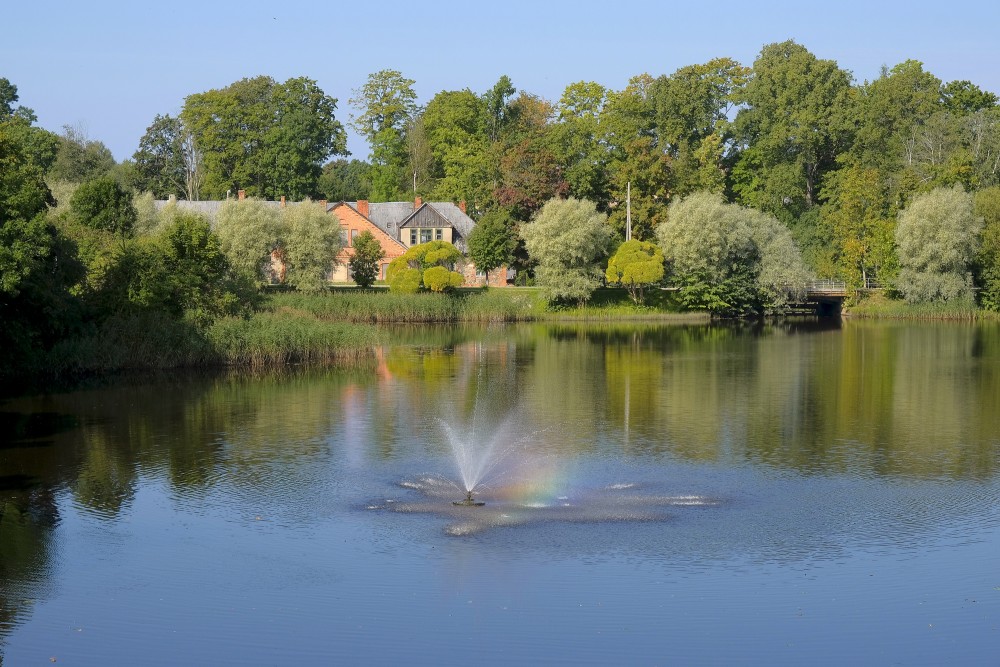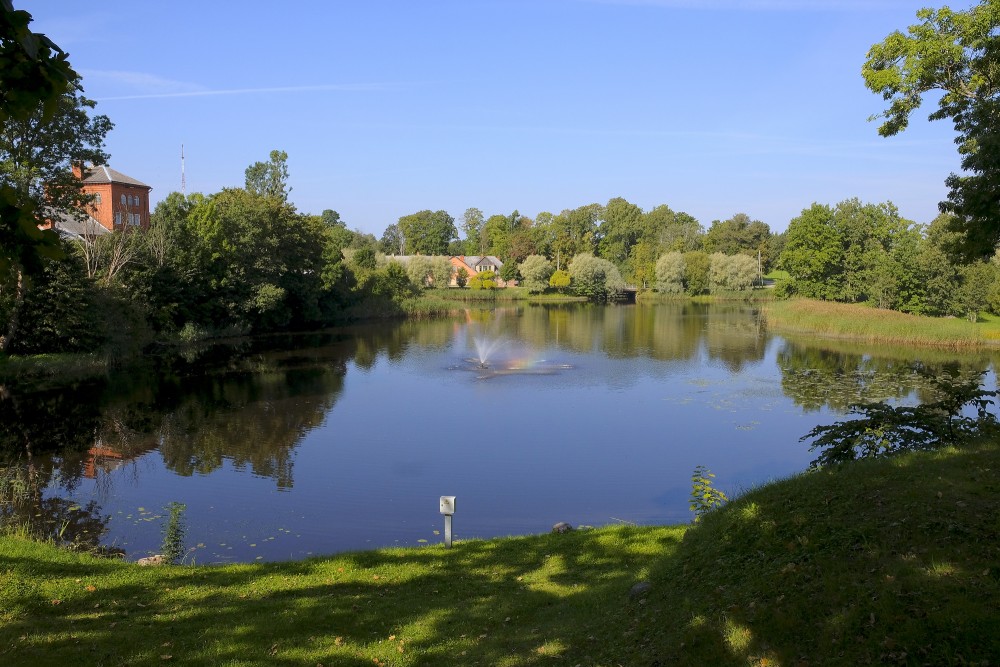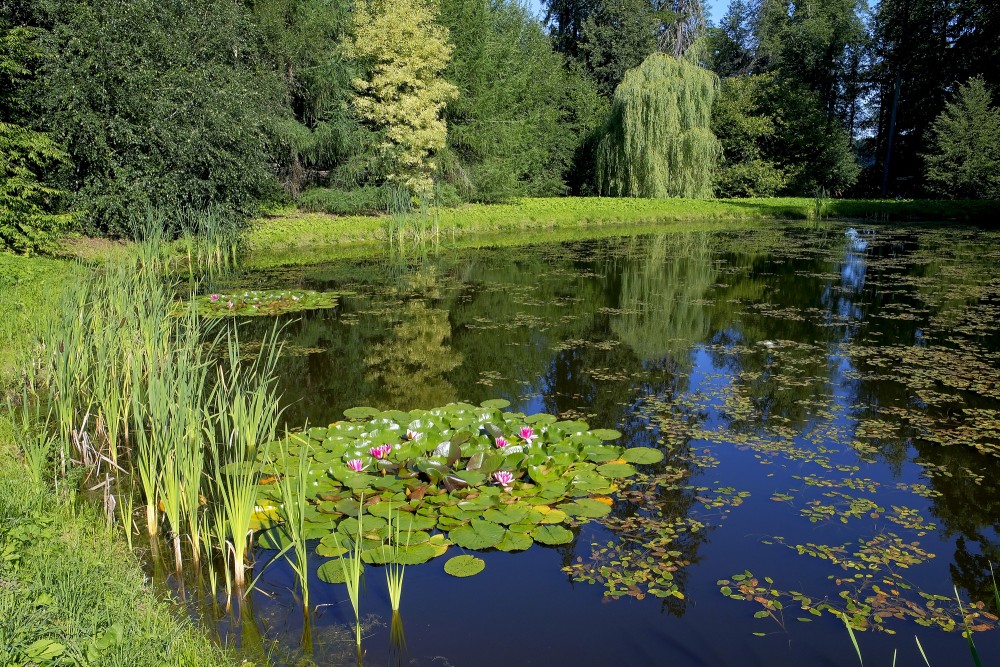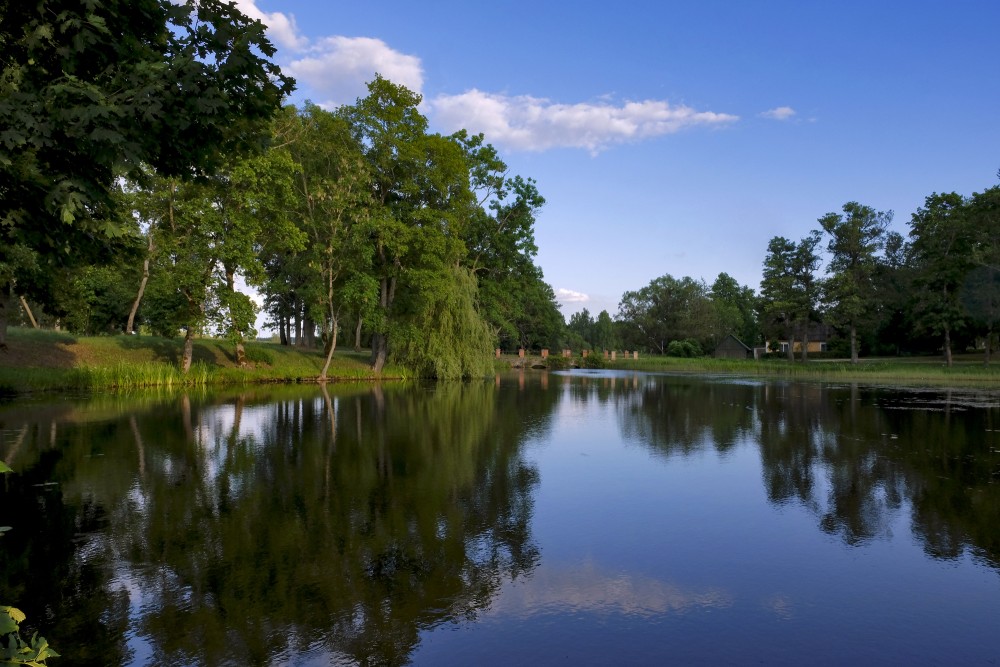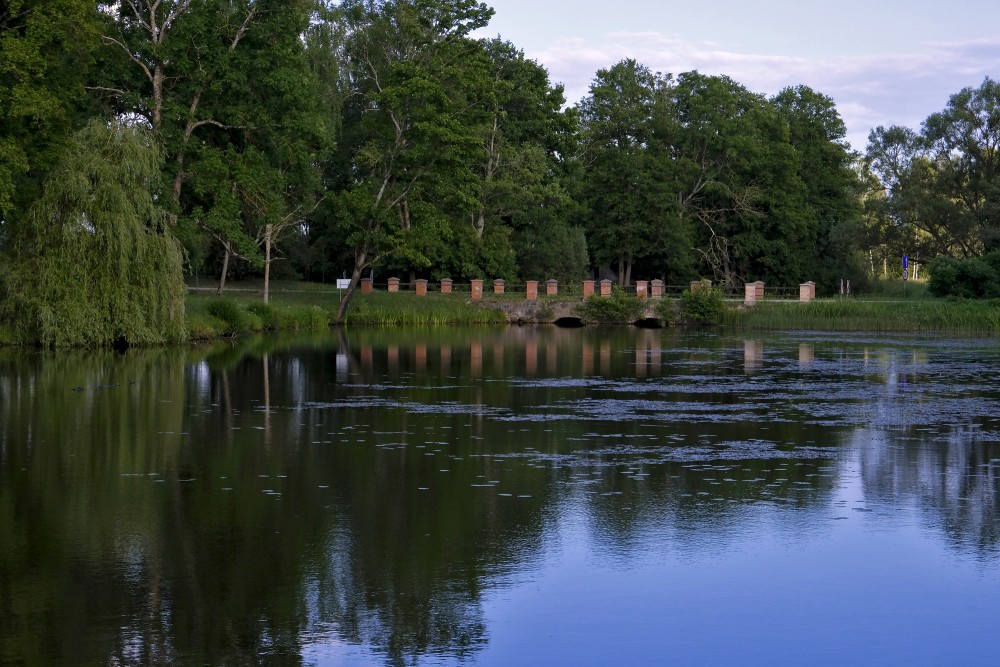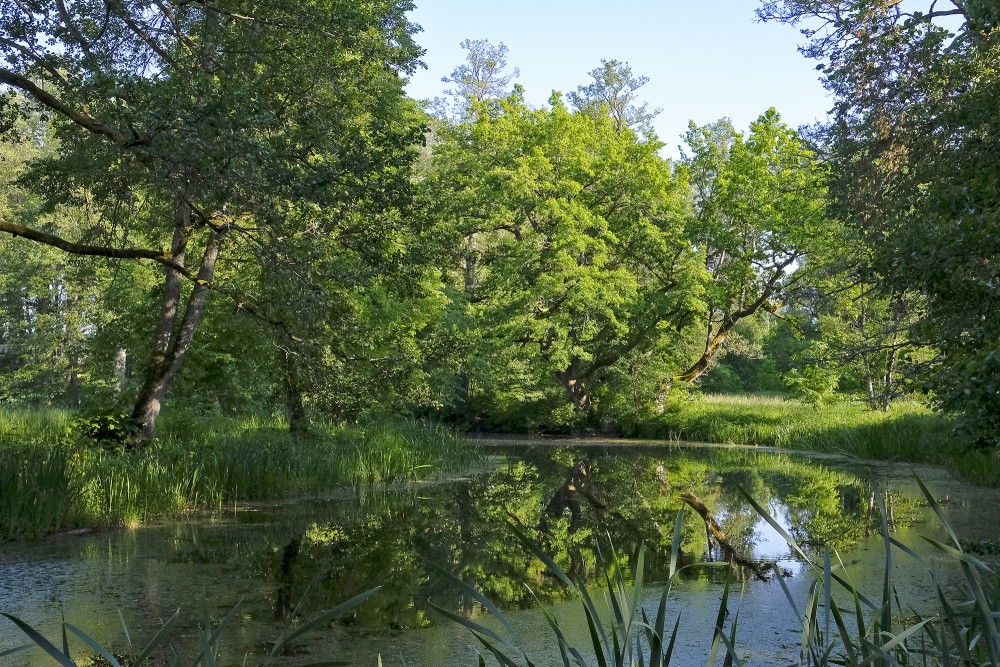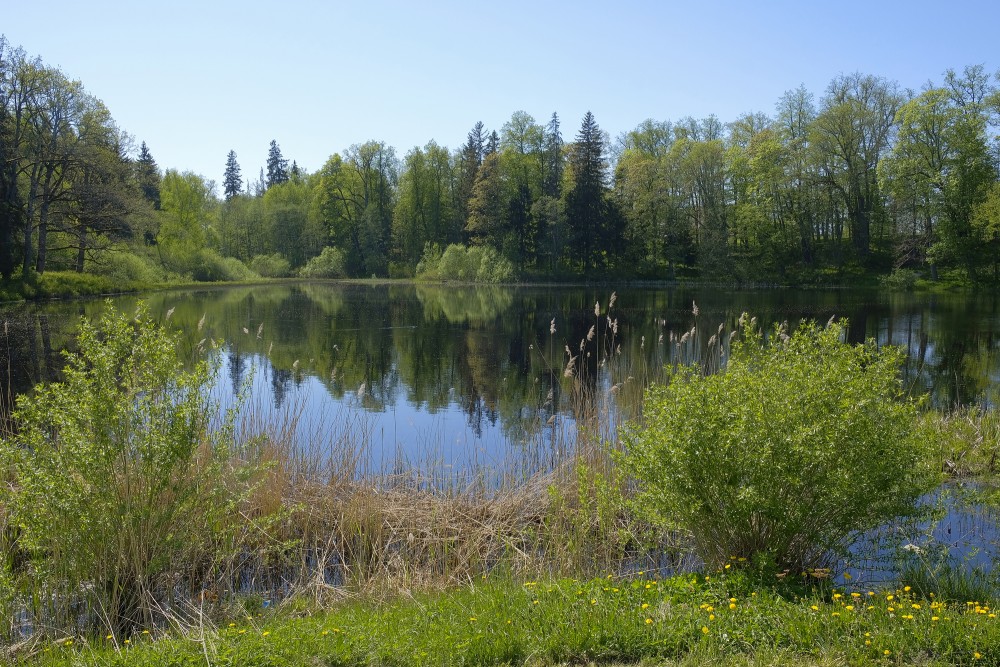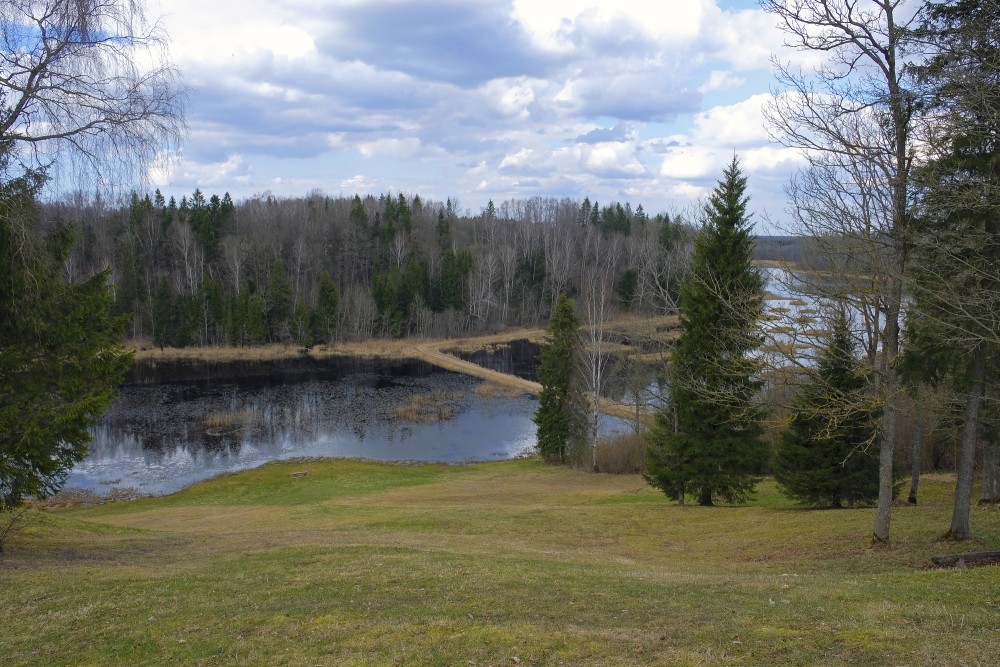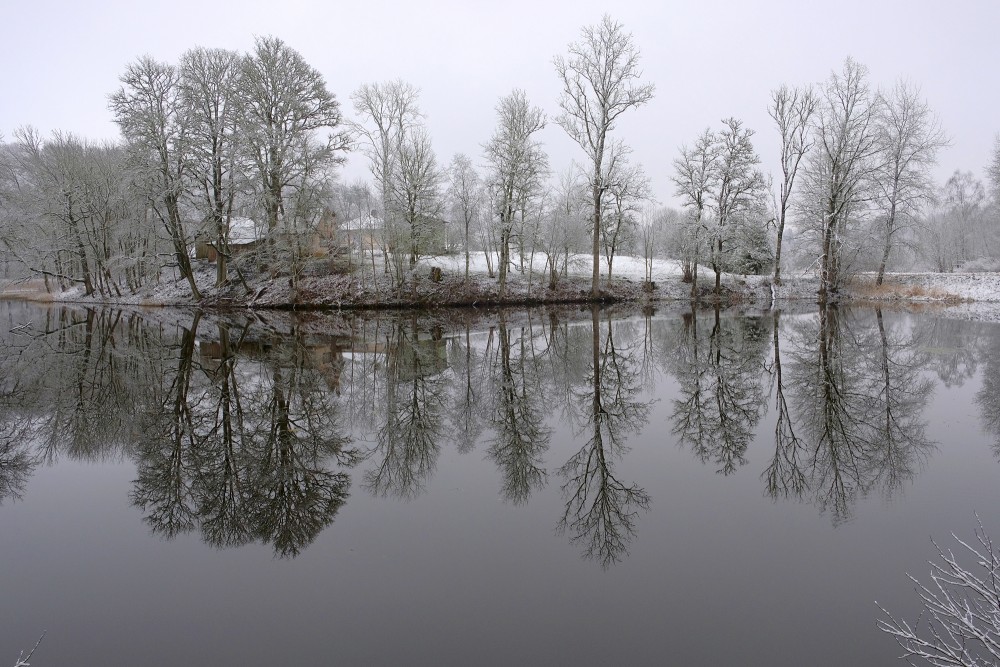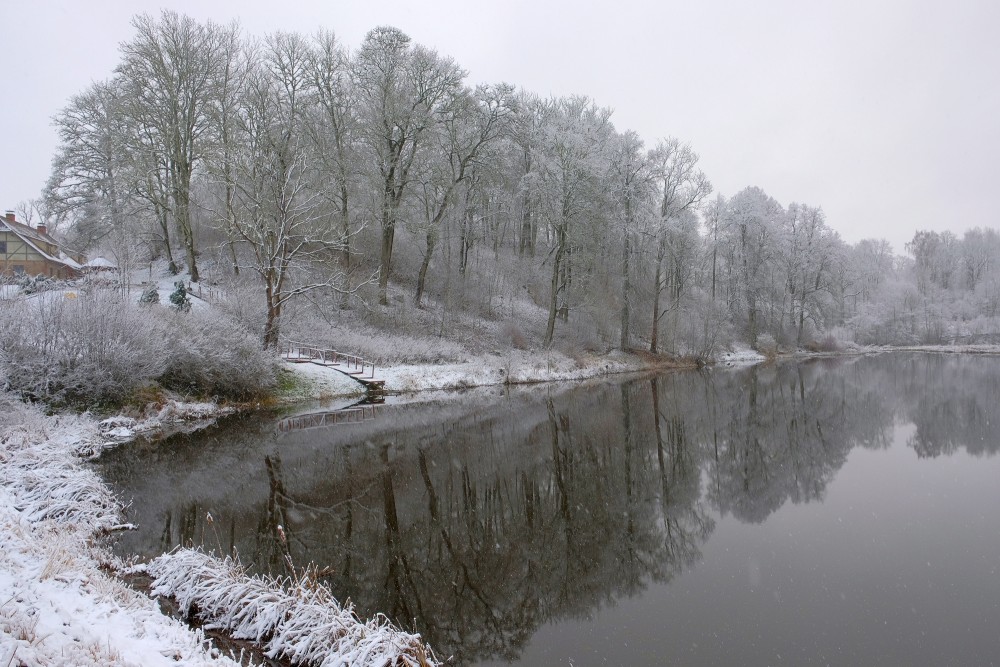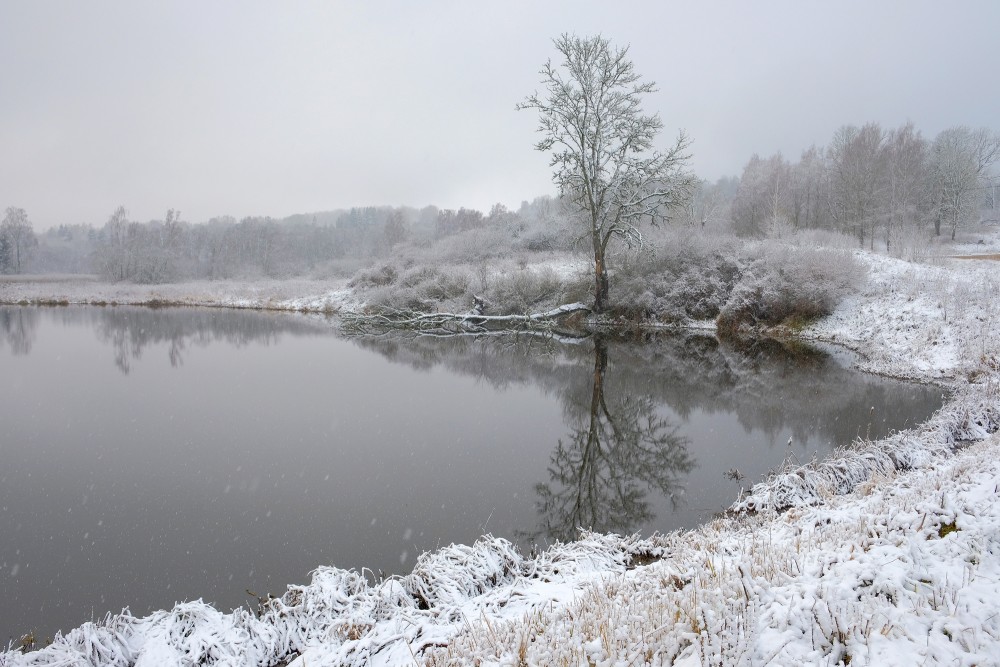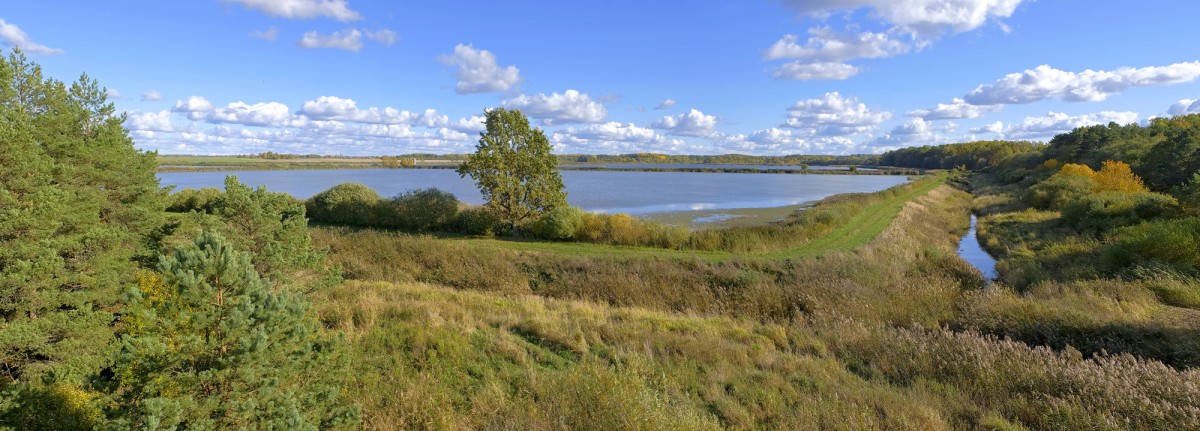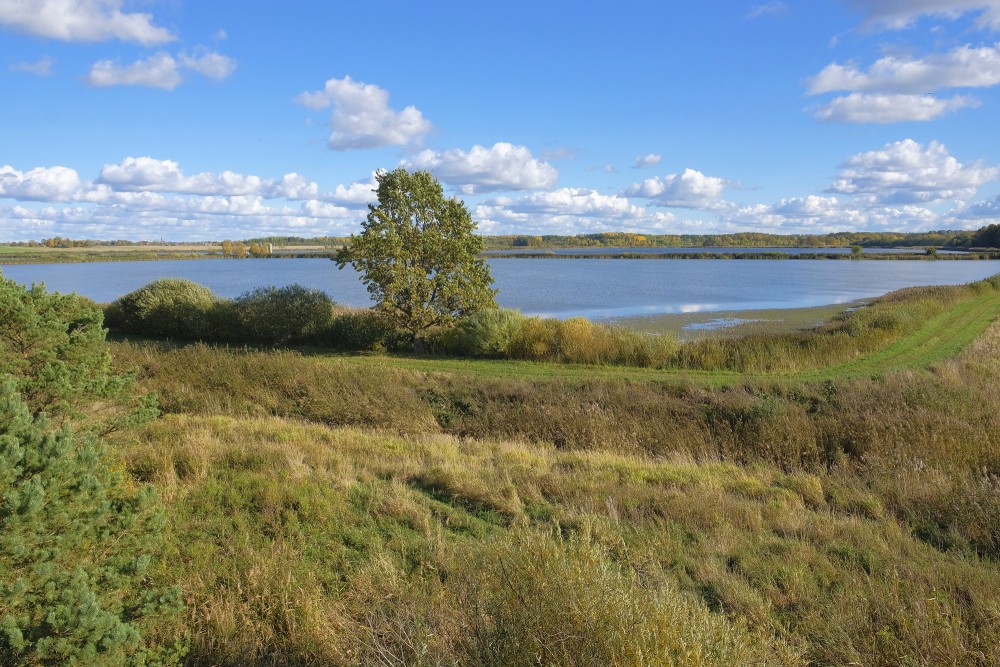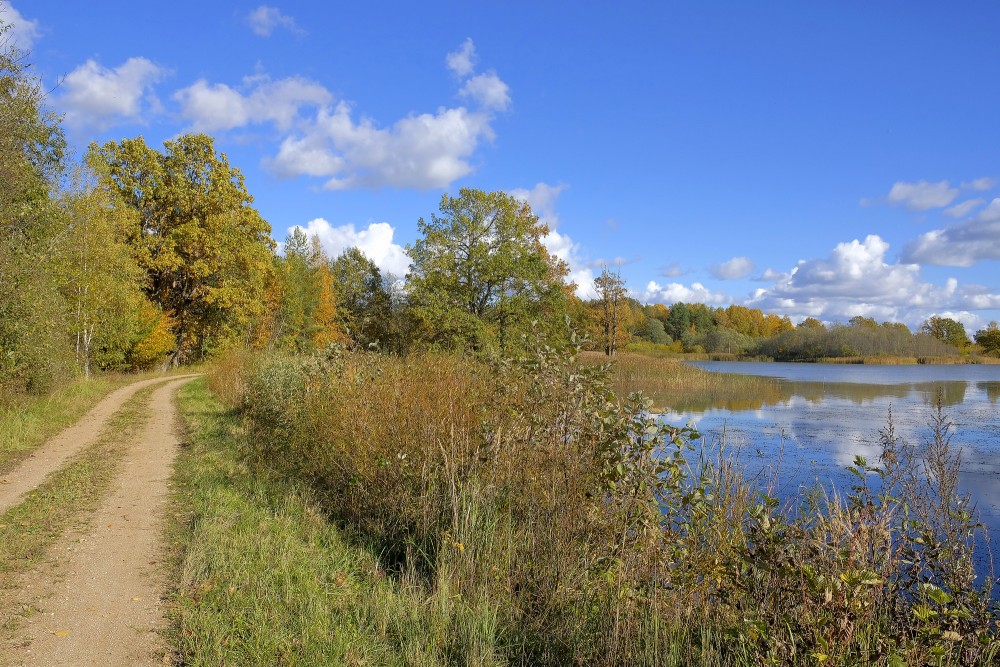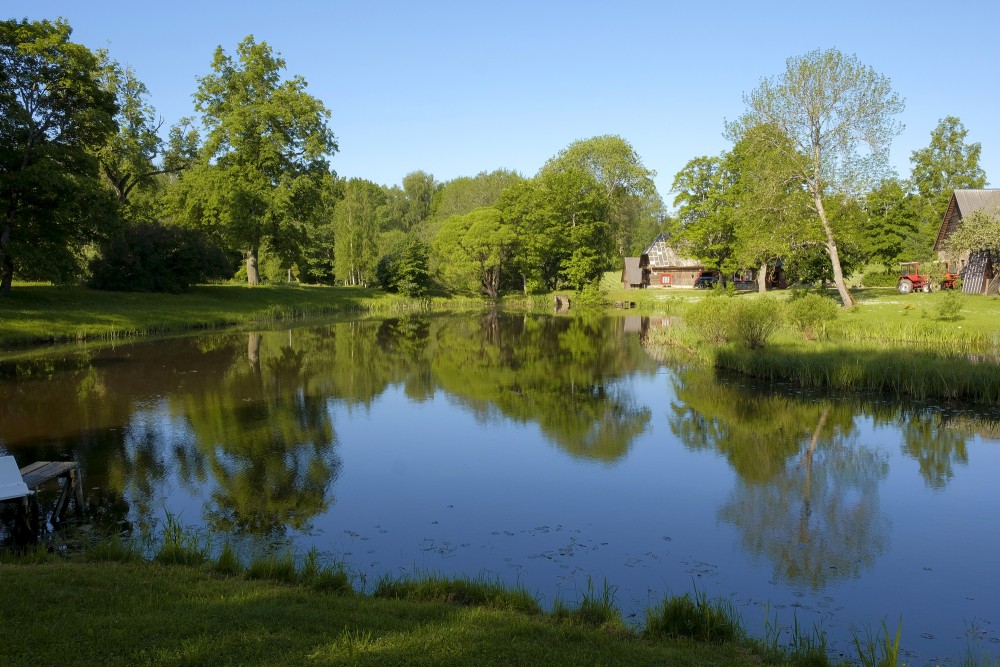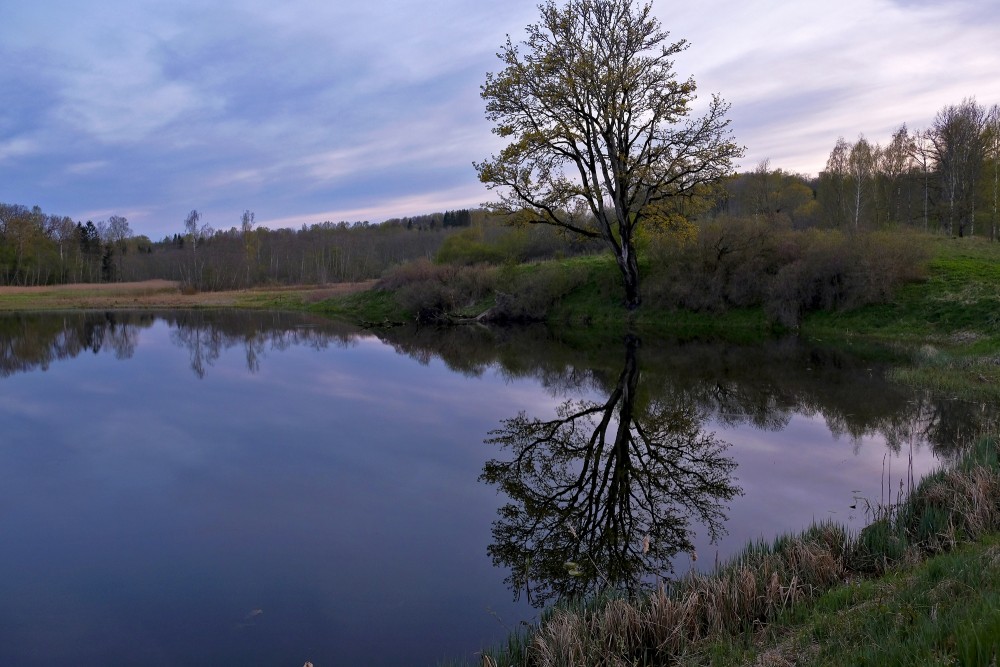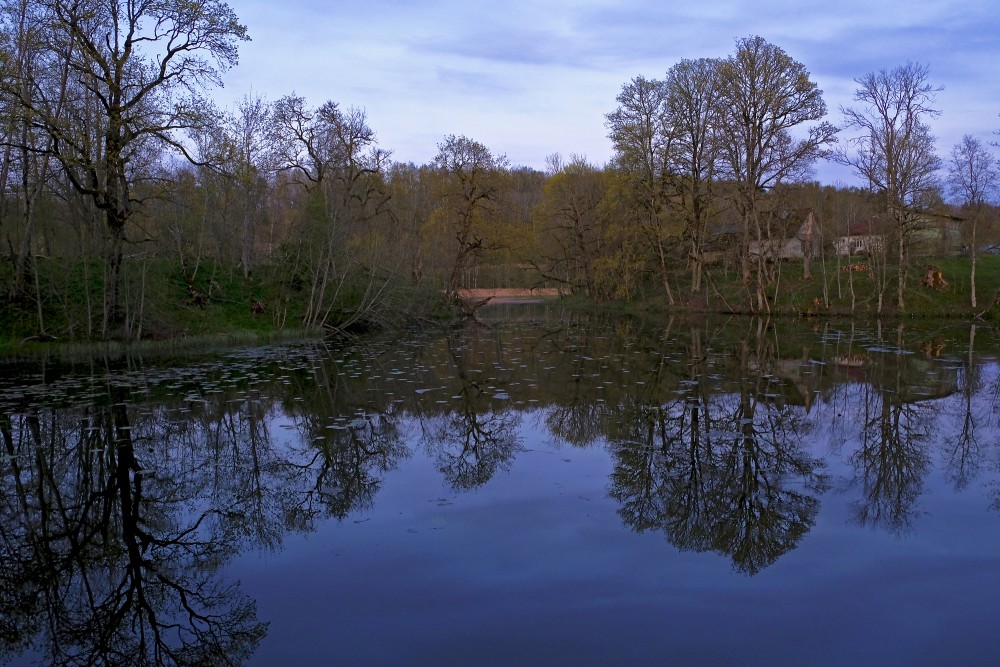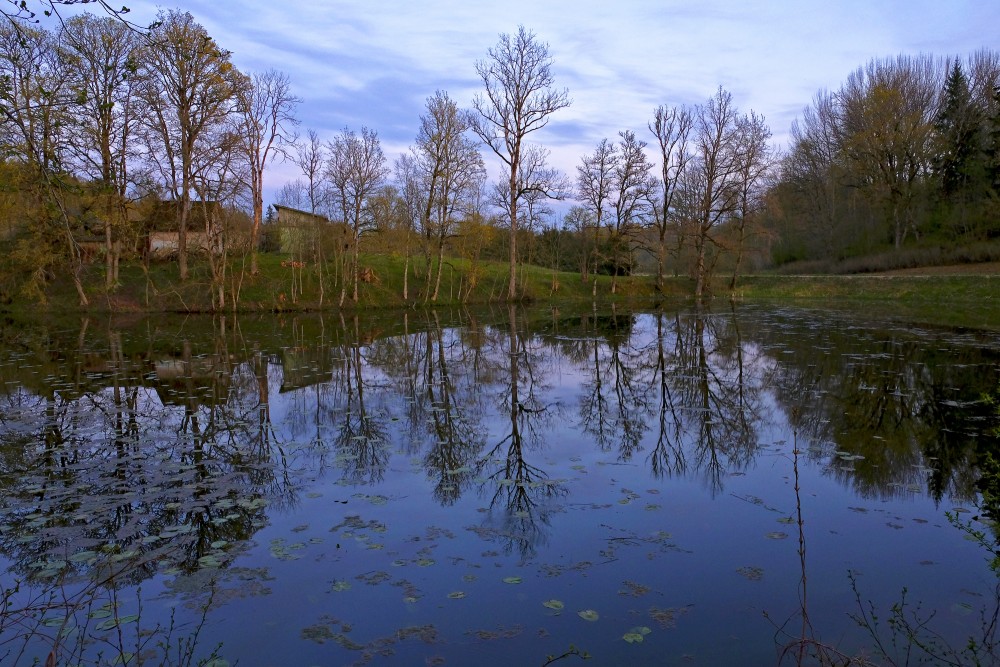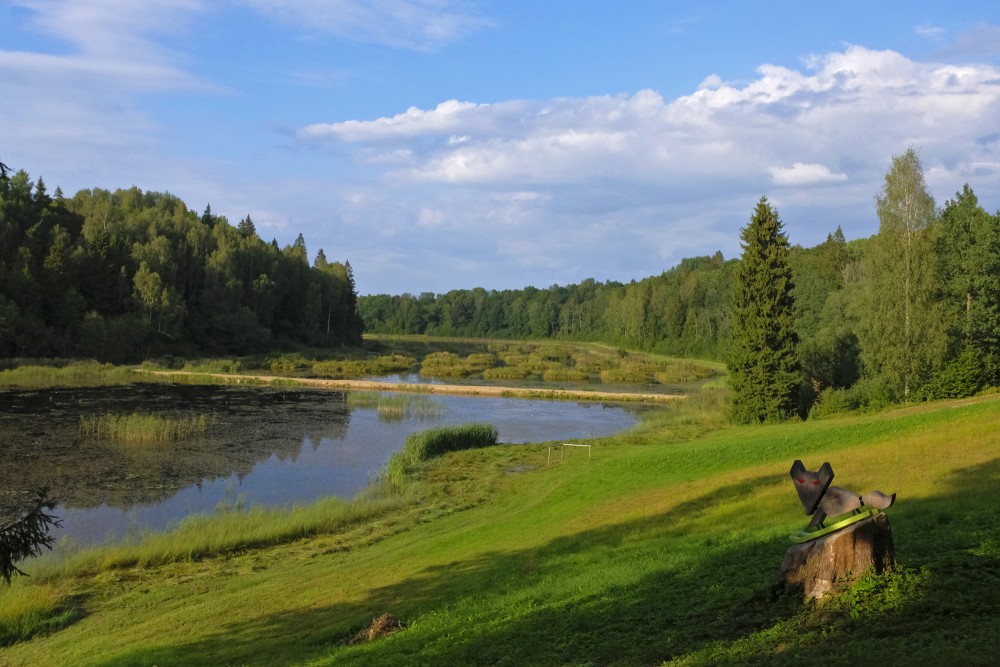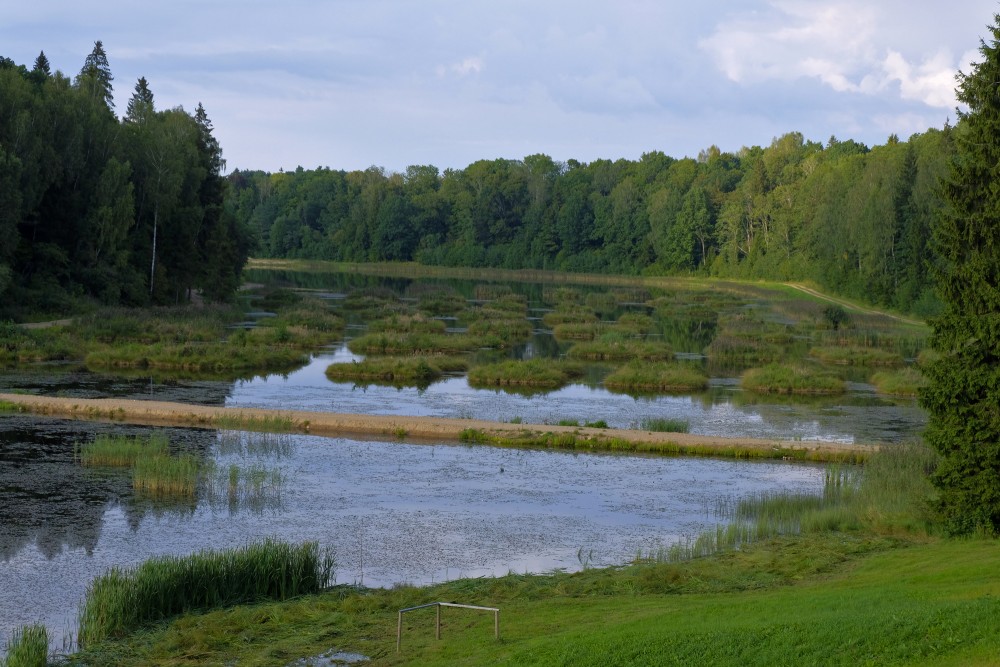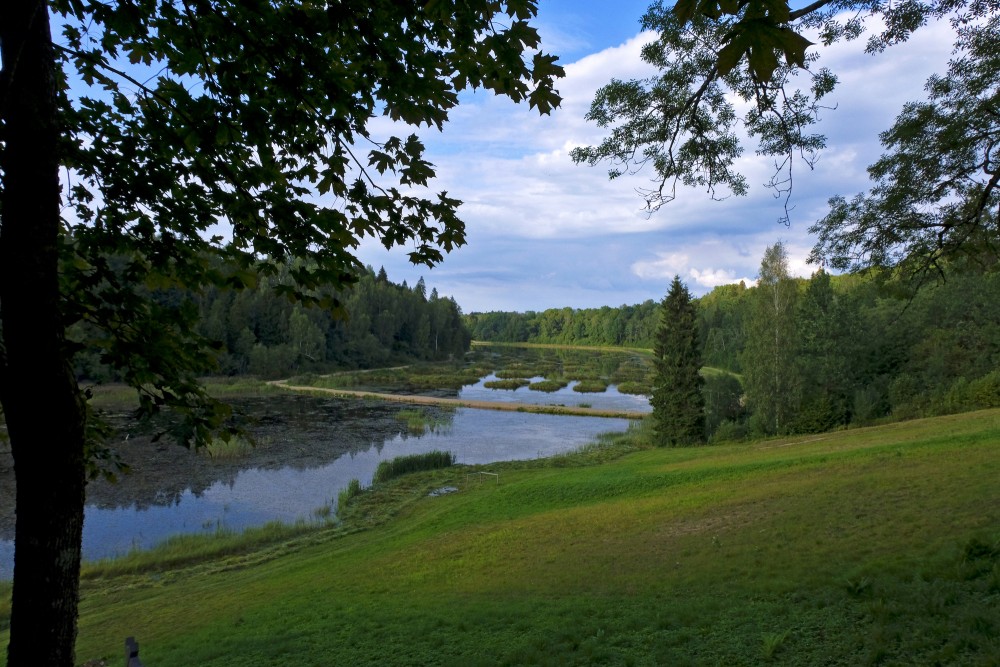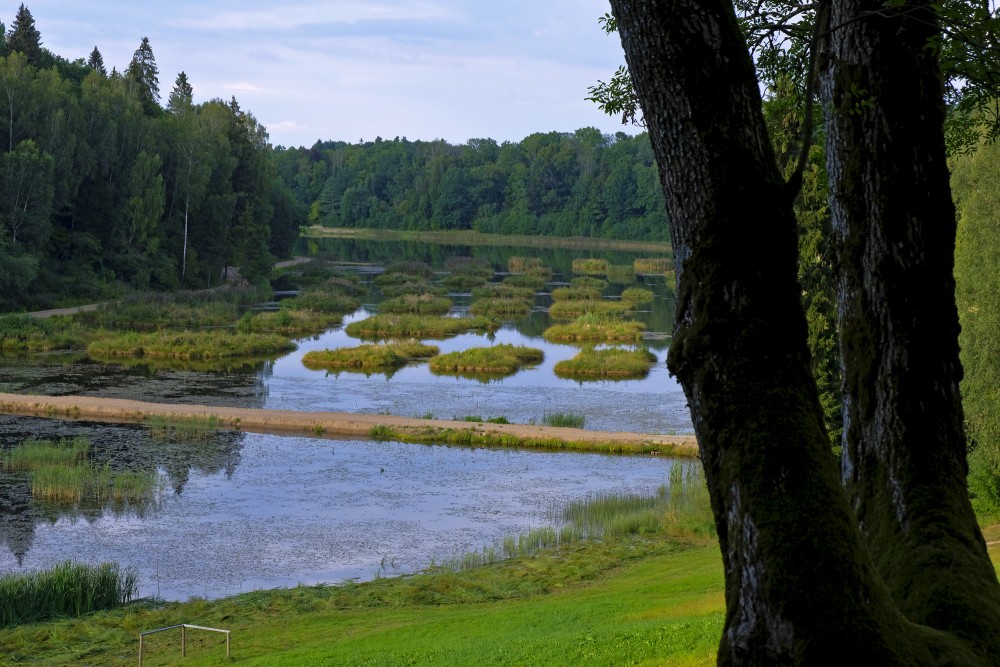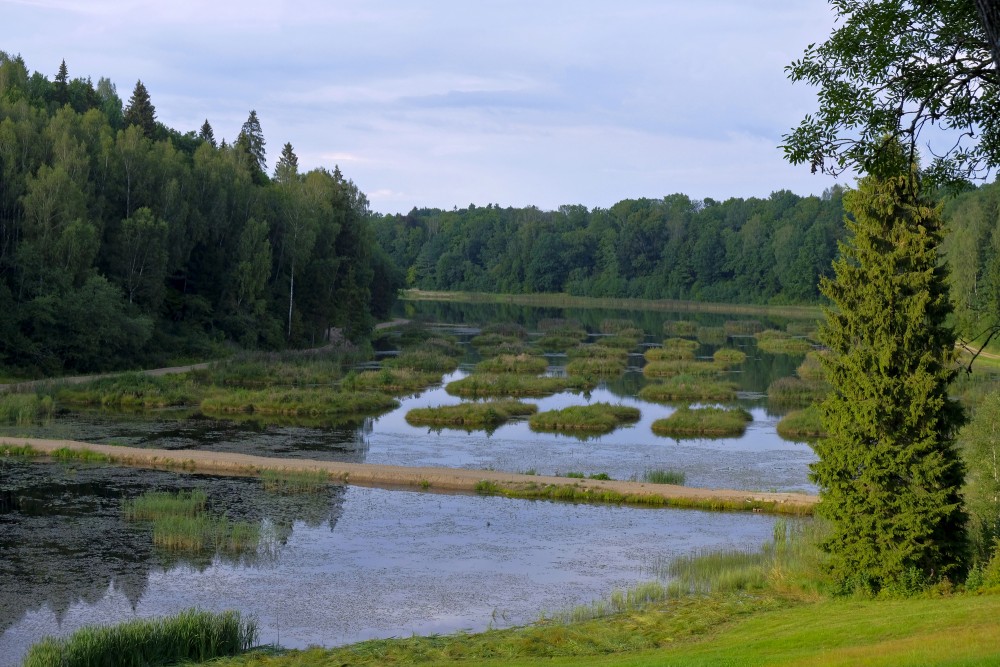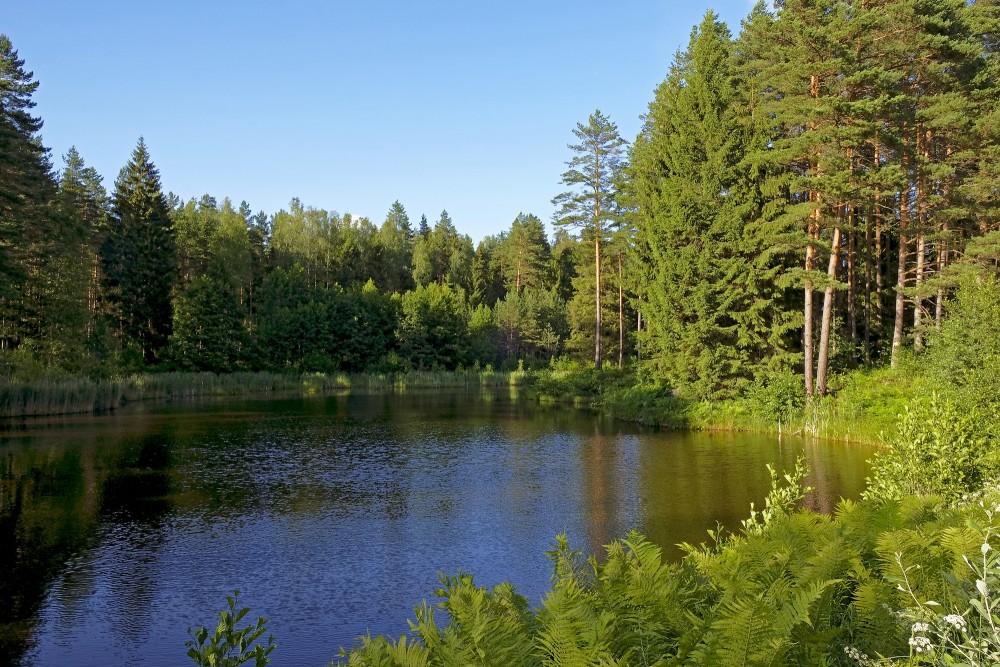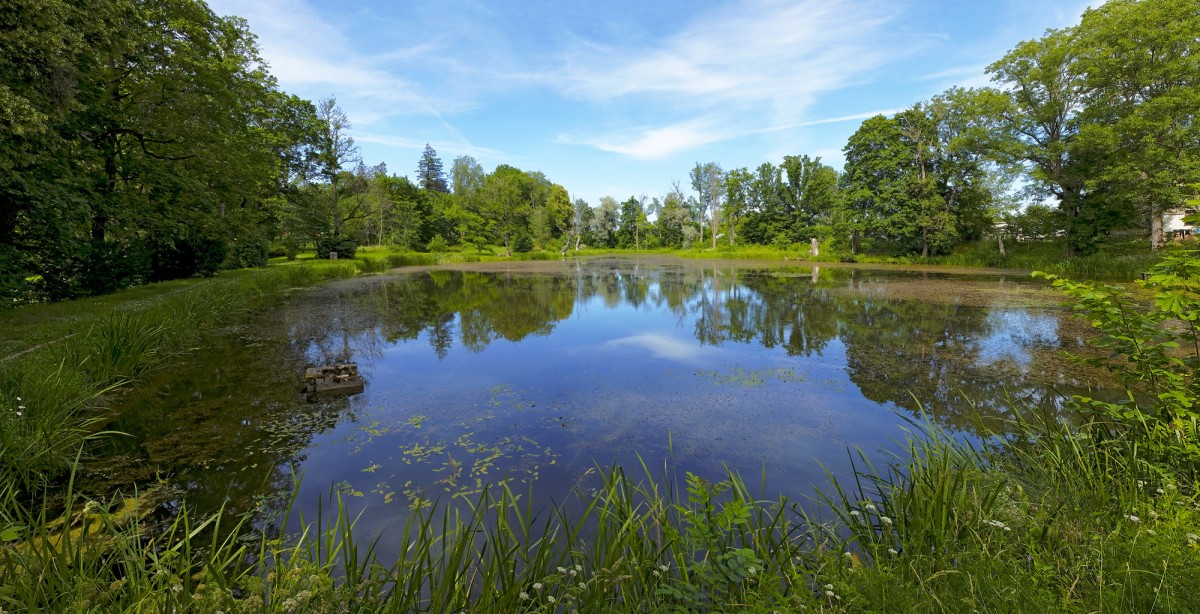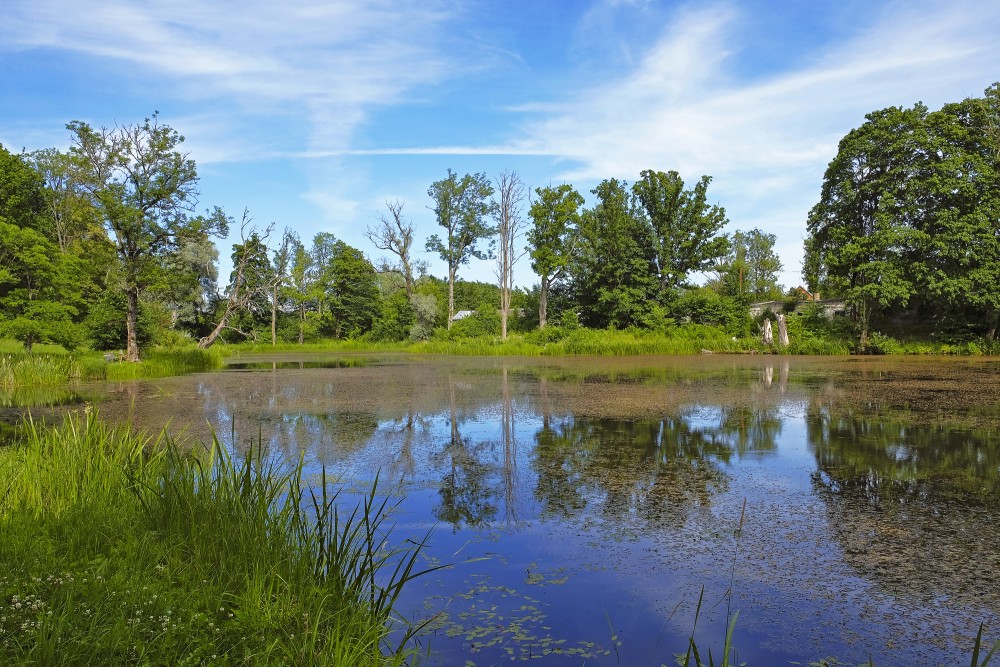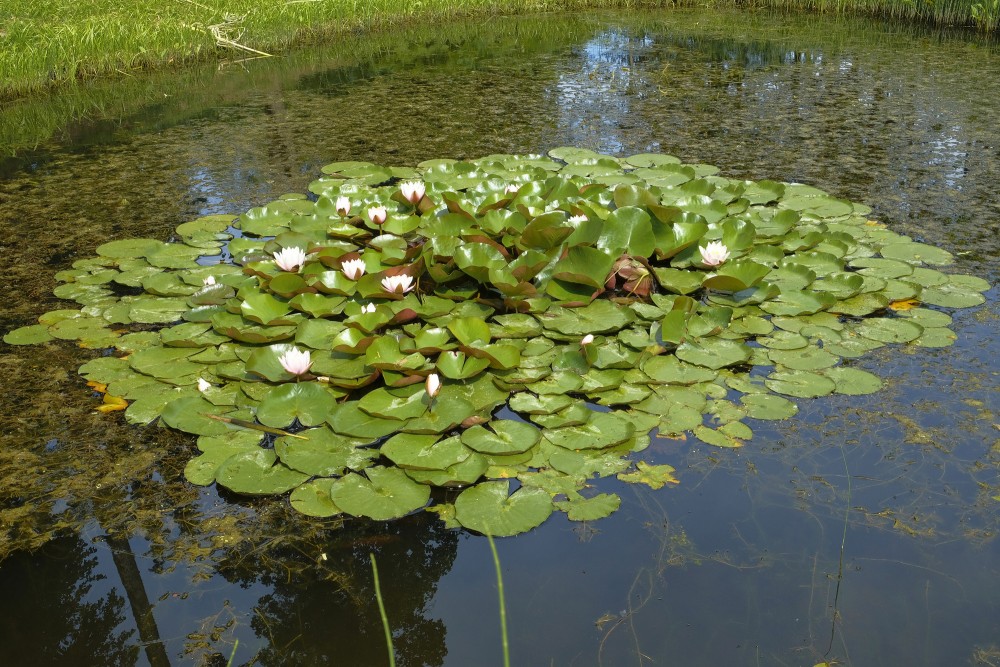Pond
A pond is a body of standing water, either natural or artificial, that is usually smaller than a lake. They may arise naturally in floodplains as part of a river system, or they may be somewhat isolated depressions (examples include vernal pools and prairie potholes). They might contain shallow water with marsh and aquatic plants and animals. The type of life in a pond is generally determined by a combination of factors including water level regime (particularly depth and duration of flooding) and nutrient levels, but other factors may also be important, including presence or absence of shading by trees, presence or absence of streams, effects of grazing animals, and salinity.
Ponds are frequently human-constructed. In the countryside farmers and villagers dig a pond in their backyard or increase the depth of an existing pond by removing layers of mud during summer season. A wide variety of artificial bodies of water are classified as ponds. Some ponds are created specifically for habitat restoration, including water treatment. Others, like water gardens, water features and koi ponds are designed for aesthetic ornamentation as landscape or architectural features. Fish ponds are designed for commercial fish breeding, and solar ponds designed to store thermal energy. Treatment ponds are used to treat wastewater.
Standing bodies of water such as puddles, ponds, and lakes are often categorized separately from flowing water courses, such as brooks, creeks, streams or rivers. Nutrient levels and water quality in ponds can be controlled through natural process such as algal growth, or through artificial filtration, such as an algae scrubber.
Technical definitions
The technical distinction between a pond and a lake has not been universally standardized. Limnologists and freshwater biologists have proposed formal definitions for pond, in part to include 'bodies of water where light penetrates to the bottom of the waterbody,' 'bodies of water shallow enough for rooted water plants to grow throughout,' and 'bodies of water which lack wave action on the shoreline.' Each of these definitions has met with resistance or disapproval, as the defining characteristics are each difficult to measure or verify. Accordingly, some organizations and researchers have settled on technical definitions of pond and lake which rely on size alone.
Even among organizations and researchers who distinguish lakes from ponds by size alone, there is no universally recognised standard for the maximum size of a pond. The international Ramsar wetland convention sets the upper limit for pond size as 8 hectares (20 acres), but biologists have not universally adopted this convention. Researchers for the British charity Pond Conservation have defined a pond to be 'a man-made or natural waterbody which is between 1 m2 and 20,000 m2 in area (2 ha or ~5 acres), which holds water for four months of the year or more.'
In practice, a body of water is called a pond or a lake on an individual basis, as conventions change from place to place and over time. In North America, even larger bodies of water have been called ponds; for example, Walden Pond in Concord, Massachusetts measures 61 acres (25 ha), nearby Spot Pond is 340 acres (140 ha), while in between is Crystal Lake at 33 acres (13 ha). There are numerous examples in other states of bodies of water less than 10 acres (4.0 ha) being called lakes. As the case with Crystal Lake shows, marketing purposes may be the driving factor behind some names.
Characteristics
One of the most important features of ponds is the presence of standing water, which provides habitat for wetland plants and animals. Familiar examples might include water-lilies, frogs, turtles and herons. Often, the entire margin of the pond is fringed by wetland, and these wetlands support the aquatic food web, provide shelter for wildlife, and stabilize the shore of the pond. Some grazing animals like geese and muskrats consume the wetland plants directly as a source of food. In many other cases, however, the pond plants fall into the water and decay. A large number of invertebrates then feed on the decaying plants, and these invertebrates provide food for wetland species including fish, dragonflies and herons. The open water may allow algae to grow, and these algae may support yet another food web that includes aquatic insects and minnows. A pond, therefore, may have combinations of three different food webs, one based on larger plants, one based upon decayed plants, and one based upon algae. Hence, ponds often have a large number of different animal species using the wide array of food sources. They therefore provide an important source of biological diversity in landscapes.
Vernal ponds are ponds which dry up for part of the year. Naturally occurring vernal ponds do not usually have fish. They are called vernal ponds because they are typically at their peak depth in the spring ("vernal" means to do with the spring). The absence of fish is a very important characteristic, since it provides amphibians with breeding locations free from predation by fish. Hence, introducing fish to a pond can have serious detrimental consequences. In some parts of the world, such as California, the vernal ponds have rare and endangered plant species. On the coastal plain, they provide habitat for endangered frogs such as the Mississippi Gopher Frog.
en.wikipedia.org
